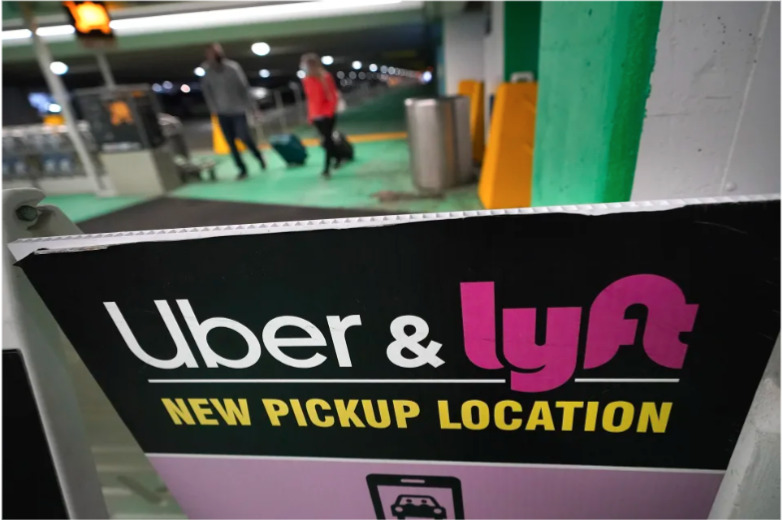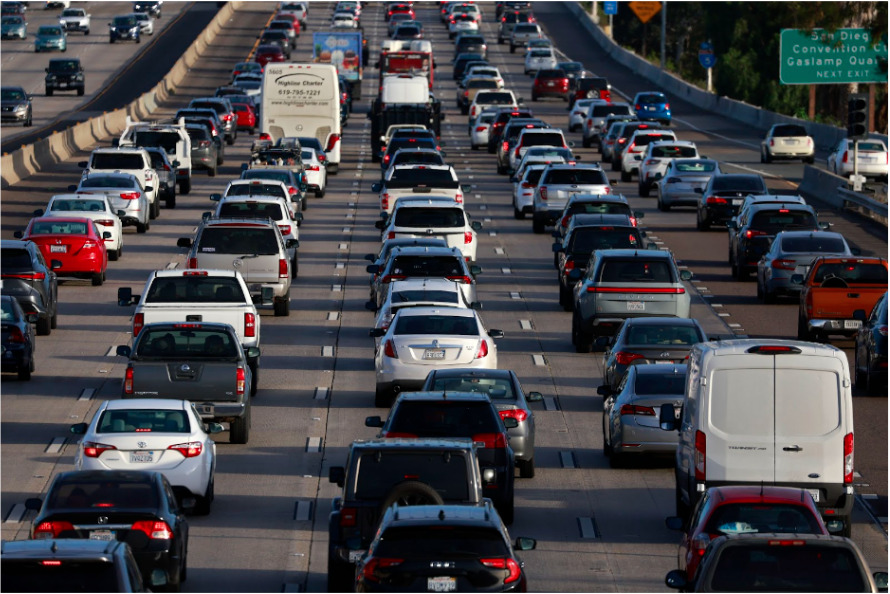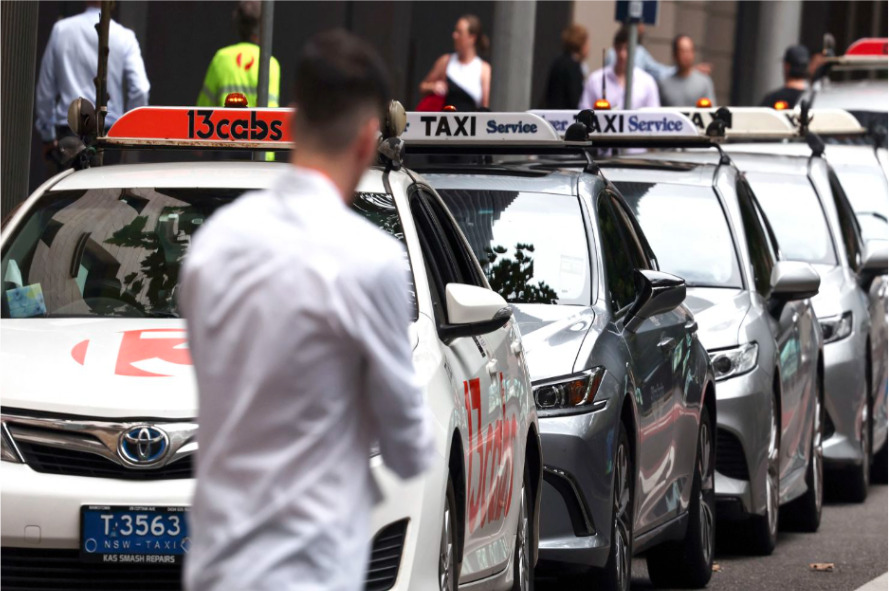All eyes are on Minneapolis as Uber and Lyft threaten to leave the city thanks to a city council vote to increase driver pay. Experts still think rideshare companies are bluffing.
Meanwhile, Biden adopted new vehicle emission rules, Australian taxi drivers won nearly $179 million from Uber, and there is an interesting tidbit about wings.
Join RSG Contributor Paula Lemar as she breaks down the top headlines in this week’s rideshare news.
Come Meet RSG’s Own Sergio Avedian and Other Top YouTubers at Curbivore on Friday, March 29th

RSG will be hosting a Gig Worker Power Hour, Presented by Solo, at 12:45 pm.
Sergio will also be speaking on our worker loyalty panel directly after at 1:45 pm.
Get your ticket here for just $5 (gig workers only) and you’ll have access to the full day of events on Friday 3/29: free food and drinks, cool vehicles and technology, engaging panels and speakers, plus a lot more!
Uber And Lyft Are Quitting Minneapolis Over A Driver Pay Increase
Topic Originally Appeared On Engadget
Summary
Uber and Lyft plan to end operations in Minneapolis after the city council voted to increase driver pay. The council passed an ordinance on the issue last week. On Thursday, it voted to overrule a mayoral veto of the measure.

The new rules stipulate that ridesharing companies need to pay drivers at least $1.40 per mile and 51 cents per minute (or $5 a ride, whichever is higher) whenever they’re ferrying a passenger.
Tips are on top of the minimum pay. According to the Associated Press, the council passed the ordinance to bring driver pay closer to the local minimum wage of $15.57 an hour.
However, Uber and Lyft say they’ll end services in the city before the pay rise takes effect on May 1.
Lyft says the increase is “deeply flawed,” citing a Minnesota study indicating that drivers could meet the minimum wage and still cover health insurance, paid leave, and retirement savings at lower rates of $1.21 per mile and 49 cents per minute.
“We support a minimum earning standard for drivers, but it should be done in an honest way that keeps the service affordable for riders,” spokesperson CJ Macklin told The Verge.
My Take
What kills me is that the rates aren’t that astronomical, but these rideshare companies are acting like the drivers are asking for $100 a ride or something crazy like that.
When I first started driving for Uber in Minneapolis, from what I recall, I was making about $1.20 per mile and I want to say about $0.60 per minute. That was just what they were paying their drivers at the time.
If they can’t be profitable while paying their drivers a decent wage, then maybe they shouldn’t be in business anyway.
As the article here shows, there are only 39 licensed cab drivers in Minneapolis. For a city of about a half a million people, not including the metro and its twin city St. Paul, that’s not a lot of cabs to go around. And take it from me, public transportation leaves a lot to be desired.
It takes a lot to get from the metro into downtown and back. I used to work just outside of St. Paul when I lived just south of Minneapolis, and it took me four buses and about 3 hours to get from home to work.
As far as I can tell, this will only affect Minneapolis, not the metro, and not St. Paul. So it’s only a fraction of the rides taken and given each day. Would Uber and Lyft leave the entire state? Or just Minneapolis itself, meaning they won’t pick up within Minneapolis city limits?
With Uber/Lyft Exit Looming, These Companies Say They’re Ready To Come In
Topic Originally Appeared On Kare 11
Summary
Rideshare companies Uber and Lyft said they would leave Minneapolis on May 1 if a new ordinance passed by the city council takes effect.
The ordinance gives drivers a mandated pay boost. To meet minimum wage levels in the city of Minneapolis, the new ordinance requires rideshare companies to pay rates of $1.40 per mile and 51 cents per minute.
Uber and Lyft say fewer riders will now be able to afford the service, making operations unsustainable.
Meanwhile, Minnesota Republicans introduced a bill on Monday that would preempt cities from regulating rideshare company pay.
Governor Tim Walz said he’s not a fan of preemption and wants all parties to come to the table to negotiate.
My Take
Not to spend all our time on the Minneapolis issue, but this will be big news if Uber and Lyft do back out of the city. Luckily, it sounds like lesser-known rideshare platforms are willing to step in and pick up the slack.
One downside is trust. Will the people of Minneapolis readily trust and accept these new options? And of course, these companies will need permission from the city as well as prove that they are going to be paying their drivers at least the new minimum wage.
Will current Uber and Lyft drivers in Minneapolis be able to transition to these other platforms, or will they all suddenly be out of their jobs?
While there are several job openings and opportunities in and around Minneapolis, none quite compare to the freedom and flexibility that rideshare has provided.
One of the options ready to take over is Empower. Read Sergio’s article, Empower Rideshare App Review 2024, to learn more.
Wridz is another service waiting in the wings. What is Wridz?: Driver App Review.
To learn more about what’s happening in Minneapolis, check out Chris and Sergio’s latest Show Me The Money Club video, where they interviewed Eid Ali of MULDA (Minnesota Uber Lyft Drivers Association).
Biden Adopts New Vehicle Emissions Rules Preferred By Automakers And Labor Unions
Topic Originally Appeared On The Verge
Summary
The Biden administration announced new automobile standards aimed at slashing greenhouse gas emissions in half by 2032 while also allowing automakers to meet their targets at a slower pace than originally proposed.

The new standards were not as strict as the proposal laid out by the Environmental Protection Agency last year, in which automakers would have been required to reduce emissions by over two-thirds by 2032.
Car companies and the autoworkers union opposed the plan, citing recent slower sales growth of electric vehicles and the popularity of some hybrid vehicles as proof that customers were still not ready to make the full switch to fully electric vehicles.
My Take
Is it surprising that new regulations aren’t as strict? I think everyone is starting to realize their zero emissions goals were pretty lofty.
All change takes time, and it always takes more time than you think. It’s like when starting a home project, you think, I’ll get this done in one hour, two tops, and next thing you know, it’s a month later, and you’re still trying to work through it.
Taxi Drivers Win Nearly $179 Million In Compensation From Uber In Australia
Topic Originally Appeared On CNN
Summary
Uber will pay more than 8,000 taxi and hire car drivers in Australia almost 272 million Australian dollars ($179 million USD) in compensation for losses they suffered after the ride-sharing giant entered the country in 2012, lawyers representing the drivers said Monday.

The settlement is the fifth-largest in Australia’s history, according to Maurice Blackburn Lawyers, the law firm that filed the class action suit in 2019. Uber confirmed in a statement that it had reached an agreement in principle but did not comment on the details of the proposed settlement.
“This case succeeded where others have failed,” Maurice Blackburn said on its Facebook page. “We’re proud that thousands of people put their faith in us to deliver this outcome, and to hold Uber to account.”
My Take
While this is in a different country, this is a huge win for taxi companies. In most markets, Uber tries to work alongside taxi companies and, in some cases, has actually teamed up with taxi companies to help keep the peace.
But let’s face it, everywhere Uber is, the taxi industry has been affected, and not in a good way. Typically, Ubers tend to be cheaper than taxis, for one thing. Who would choose a more expensive option unless it’s also safer and more comfortable, which taxis are necessarily better in those aspects.
How to Order Wings For Delivery to Avoid Soggy Sadness
Topic Originally Appeared On DoorDash
Summary
The heart wants what it wants. But the heart can break. And the heart breaks when an order of wings shows up at the doorstep soggy, cool, and so violently transported the sauce coats its container like a crime scene.
Because the art of ordering wings for delivery isn’t just an art but a science.
A science that spans thermodynamics (the container’s heat retention capabilities), geography (are you in a wing-concentrated area?), topography (how far must your wings travel?), physics (oh god, is the delivery person on a bike?), chemistry (the wing’s coating recipe can change everything), and meteorology (is it…winter?).
Who knew wings could be so complicated?
We did. Which is why we consulted experts in various fields — yes, takeout containers are a professional field — to weigh in on how to order wings for delivery to ensure the best eating experience possible. Important investigative work was undertaken. All for the love of wings.
My Take
Just needed to end the week on a whimsical note. I mean, let’s face it, there’s nothing more important that getting your wings in the state they should be — crispy and edible; not soggy and mushy gross.
There are several foods I refuse to have delivered and wings is one of them. But if we’ve solved the problem, pass the solution around to your favorite wing place so we can all have a good wing delivery experience.
RSG in the News This Week
Read more trending topics in the news this week:
- When Nobody Is Behind the Wheel in Car-Obsessed Los Angeles (archive.ph)
- Lyft Begins Notifying Drivers, Riders That It’s Leaving Minneapolis
Must Listen Or Watch RSG Content
Here are this week’s featured podcast episode and YouTube videos:
- RSG254: Curbivore Preview With Jonah Bliss
- Uber CUTTING Driver EV Incentive By 37% – Show Me The Money Club
- Uber/Lyft Threaten To Leave Minneapolis – Will They Really??
- How Does Rideshare Driving Impact Our Brain?!
- How To Use Uber Driver App – 2024 Training & Tutorial
- Make sure you Subscribe so you don’t miss out on future conversations and interviews!




